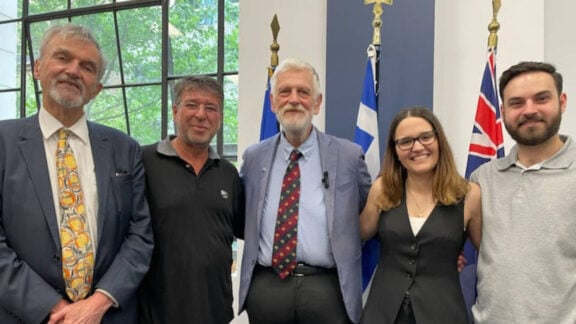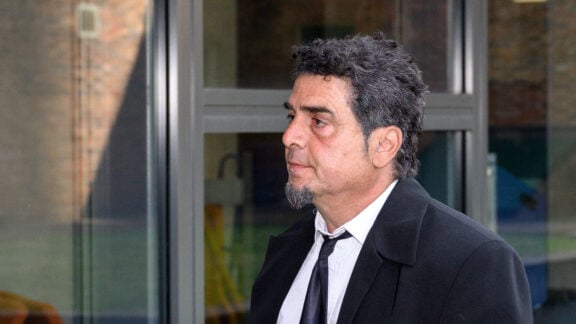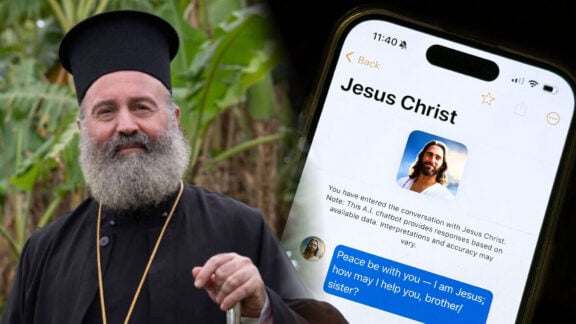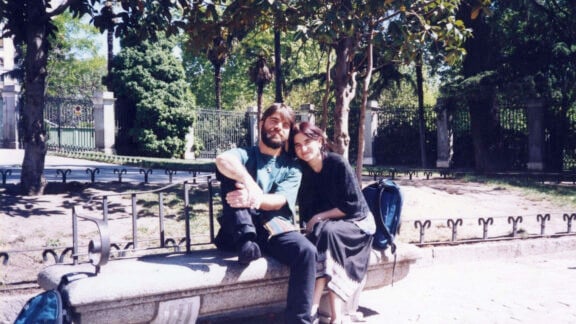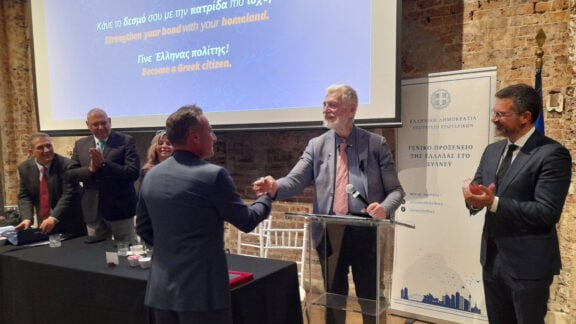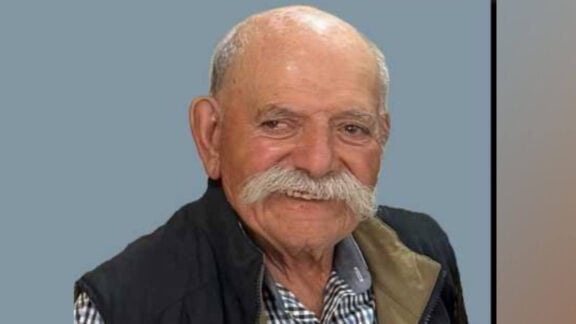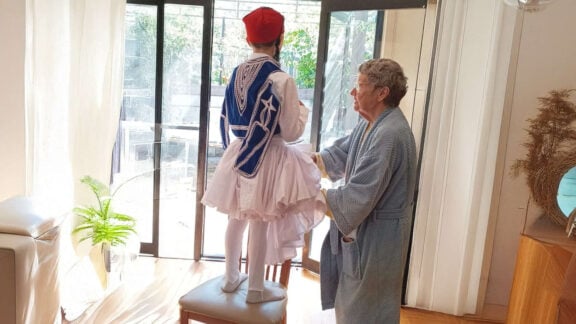Bill Papastergiadis’ tenure at the helm of the Greek Community of Melbourne has already been synonymous with one of the most ambitious projects in the history of the community: the development of the Greek Centre for Contemporary Culture on Lonsdale Street. Its opening two years ago put an end to an often heated debate, to the extent that it is now hard to imagine that this had once been a controversial project.
Now the Community has announced an even more ambitious project, regarding a property that has been the object of debate and arguments for 30-odd years. The development of the Community property in Bulleen was announced as a project that would not only allow the usage of the site to bring in funds by selling one-sixth of the site for $11 million, but also the building of a new ‘Greek Centre on the Yarra’ (designed by Billy Kavellaris of the acclaimed KUD architects), which will host aged care facilities, schools, community and function spaces, retail and hospitality spaces and sporting fields.
This announcement put an end to the controversy surrounding the property, with a series of community stakeholders (some of them previously opposed to the idea) now coming to express support. Bill Papastergiadis offers his own take on the project, putting it into perspective.
What kind of feedback have you had since the official announcement of the development plan?
We have had tremendous feedback. In two days, we’ve had 18,000 hits and messages, most of them overwhelmingly positive. It’s extraordinary how positive it is. And perhaps for the first time, we’re getting a lot of messages from Greece saying “we’re so proud of you”.
We even had the president of the Greek Parliament Diaspora Committee, Alexandros Triantafillidis, call me yesterday from Greece to express his enthusiasm and support. And we haven’t really announced it in Greece! So this is a project that really resonated not only with our community but globally. We don’t think there are many projects like this in the global Greek diaspora.
I’d like to think that with this project we are setting up Melbourne as the Hellenic global diaspora headquarters and as a model not only for Greek but for all migrant communities about how to relate to one another, to work with one another and achieve goals in a unified manner.
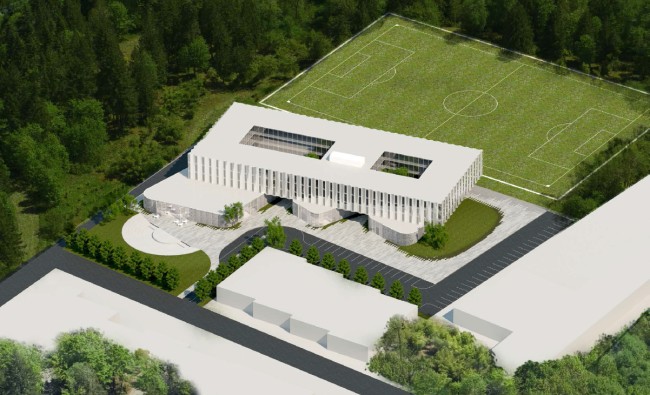
How much of a priority was the Bulleen project for you?
The work we do as a board with the Greek community is done with due diligence, in terms with the goals that we want to achieve, and also expertise. We have tried to bring these characteristics to each of the tasks confronting us, setting our priorities.
Some seven to eight years ago, when I first became involved in the GCM, we looked at one of the main challenges confronting our community in general. The first one was the lack of modern and up-to-date premises and facilities.
Secondly, associated with that was a dwindling membership base and one which was largely accounted for by first generation Greeks.
That was fine for where we were at, but we needed to find a solution for a parikia that was now evolving and changing. We had to find new ways, new means to communicate and to also relate with the next generations coming through, while also acknowledging the needs of the first generation.
Dealing with next generations, we determined that it was appropriate to construct premises that would provide a vision and have direction for not only Greek Australians but for all Australians, in regard to Greek history, language and culture, a facility that would also be the example for all other emerging migrants to this country. The Greek Centre for Contemporary Culture on Lonsdale Street was a product of those aspirations and those needs. In many ways it has been an entirely successful project, leaving aside the financials and the economics of it.
In your view, what is the measure of the centre’s success?
It is a vibrant meeting place. We have 1,500 visitors per week while historically, the Greek Community was visited by only a handful of people. Now, it is a venue that is utilised not just by Greeks but by Asians, by commercial organisations, by industry groups, by government and by other community groups. A recent event by the Planning Institute was hosted at the Greek Centre and the Melbourne Comedy Festival, one of the largest in the world, holds its key event there. So we’re bringing people to our building and to our culture and to our history, people who would not enter our building in the past.
Leaving aside its broad appeal and broad interest, from our own perspective, it has given us the opportunity to create modern offices and in those offices to house NUGAS, The Hellenic Initiative, the New Hellenic Medical Association, numerous organisations who now utilise our facilities free of charge. Our function centre is used almost every night by different groups. So the building is not just four walls − it’s alive, it’s active, and it’s a hub.
We’ve now received a grant from the federal government to finalise our exhibition space, which will house the history of the Greek Community in Victoria, and within 12 months it will be up and running.
We’ve also set up a school there. We didn’t know if there would be interest in a Greek school in the city, because there hadn’t been one for more than 20 years. We now have schools that operate every night and have already reached capacity. We’ve run out of space. So we’re actually now a victim of our success. We have no more space in our building to house and deal with our schooling needs.
Is this why you saw a need to create another centre outside the CBD?
The Greek Centre deals with what we thought was needed to provide modern, current, interesting facilities to the community, to entice the interest of the next generation.
At the same time, we’ve also recognised that the needs of the first generation Greek-Australians need to be better dealt with. Quite a lot of these people don’t have the ability to drive into the city or to catch public transport. They need something more regional that will meet their needs. I’ve attended over 500 events in the last eight years. At many of those events people expressed to me the need to build the project at Bulleen, to create a centre where we could meet, we could store our archives, a place to utilise for our function space, for meeting rooms, with ample parking − somewhere to go have coffee and watch our kids play some sport.
We thought it was a great idea, but as part of doing that we also think we need to activate the facility. It can’t just be people turning up to play cards, it has to meet other important social needs. The idea is to host an aged care facility with a social community facility; this achieves and meets first, second and third generation needs and that’s what this facility caters for.
This is why it has received so much support.
It seems that you have managed to finally put a 30-year debate to rest.
This is a complicated piece of land. When the people who purchased it did so, it was with eight planning restrictive overlays, from compulsory acquisition to flooding, and with only four per cent of land having zoning for usage.
So we have inherited a significant problem. But we wanted to meet those challenges. And we’ve worked diligently with the state government, the key stakeholders, to find an outcome that I think finally, after 30 years, deals with the restrictive planning overlays that affect this land and also deals with the $3 million that will be required to build the necessary waterways on the land to deal with the objections by Melbourne Water.
It took many years of preparation, working with some of the best people in the country. We aspire to excellence, that’s the mantra of the GCM. We work with the best people to get the best outcomes.
Did you believe in this project from the start?
Absolutely. But I believe more so in the people. It’s people that make things happen. It’s energising the creative will and interest and energy in others to effect change. The beauty of my position is that I’m surrounded with many talented, hard-working directors and supporters. What we do, we do collectively.
The main trait of this GCM board is the unity and the respect with which we work, as well as the respect we have towards the community in general.
Now that it has officially been announced, what is the next step for the Bulleen project?
This is a three to five year project. Now it needs more extensive community consultation, about the types of space we need and how we will use them − how we can fit in Pronia, for example, which will be servicing the needs of the most challenged members of our community; also the aged care facility. We’ll enter the consultancy phase with numerous organisations. It’s early days. It’s a five-year project but we’re excited.
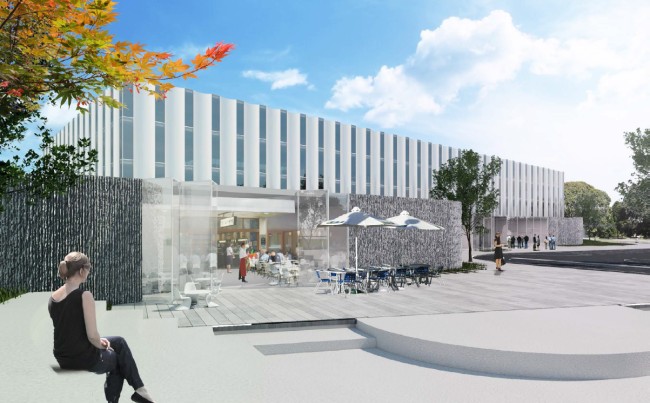
How do you envisage the two buildings complementing each other?
Our community needs more than two buildings. I keep telling this to people. They come and say to me “what a great project the city was, you must be very proud”. And I say, we haven’t even started yet. We haven’t tapped into the potential that exists. To me, this is only the beginning and we’ll continue to work with others to see if we can build additional community centres around Melbourne, so that we can deal geographically with the needs that we have.
What is the most pressing need you have identified?
There are numerous pressing needs, ranging from services to the elderly to the disenfranchised who are in need of other social services − and Pronia is doing a great job there.
Then there are the education and culture requirements which need to be more innovative; as a community, we have to fund and invest in new culture and education projects.
We need a strong income base to fund the university program, to fund the scholarships, to fund our schools, our composers, our artists − we need to have a strong economic base for all of that.
What motivates you to keep pursuing all that?
I’ll tell you what motivates me − in very simple terms, the difficulties and the hard work of the first generation; of my parents and uncles and aunties who I saw grapple and deal with significant problems they encountered as migrants to this country.
What motivates me is to create opportunities for our children, for the next generation. In other words, to leave something better than what we found. That is incumbent upon all of us, to leave what we have in better shape for the next generations while respecting the work that’s been done historically.
BILL PAPASTERGIADIS ALSO SHEDS LIGHT ON:
• The reinstatement of Evangelismos church
“Evagelismos in one of the jewels in the Community’s crown. As the first purpose-built Greek Orthodox Church it is an important part of the history of both the Victorian and the Australian broader community. As it is a heritage-listed building, there are numerous statutory requirements that must be met for this building project.
“The reinstatement of the church will be made possible in part by insurance monies but also a considered effort in donations. A committee has been formed, led by Professor Marinis Pirpiris. We have appointed its lead architect and project manager, Costas Moschogiannis, and enlisted the assistance of Peter Paras, one Melbourne’s leading forensic engineers. The initial work to make the site safe and secure has been completed. In addition, we have engaged one of Victoria’s top heritage architects, Arthur Andronas. The community has submitted plans to both council and Heritage Victoria. We are currently ahead of schedule.
“The reinstatement will include a number of complex and inter-related elements, many of which depend on the economic support of the local community. There is a process of reinstating the interior of the church. As it was sadly completely burnt out, this will involve a significant proportion of the activity. The two elements of the interior which are of particular interest to Heritage Victoria are the ‘templo’ and the ‘mezzanine’. The reinstatement will also require new fittings and furnishing, and the community is in the process of providing all interested parties a document outlining the various way by which they may support the reinstatement.
“The church will also require a number of improvements, some of which relate to bringing the church to the current code. The reinstatement will also involve the construction and fitting of a new centre, which will provide the parish with an office, a small kitchenette and exhibition area. Finally, the reinstatement will hopefully include beautification of the exterior of the church with appropriate fencing.”
• The Greek Centre for Contemporary Culture finances
“The centre is fully leased, with an annual rental of approximately $1 million. This easily services the loan. The loan as publicly declared is approx $5.9 million and is easily serviced by the annual rental. In addition, we have retained an extra floor (fifth floor) which could be leased for $120,000 per annum that we have not rented. Hence the total amount of rent exceeds $1.1m per annum.
“This is well above what was expected. The board has been privileged to deliver such an outstanding statement of Hellenism in the city centre.”
• The centre’s delayed finishing touches
“The Community has focused on the consolidation and growth of its language classes and we are in a fortunate position of almost having filled our language classes in Modern and Ancient Greek, Latin and Greek for beginners. We have been overwhelmed by the support of the wider community with an active interest in communicating in Greek. The replicas of the Acropolis Metopes have been constructed and are in the process of being timed into the numerous activities of the Community. This will take place in 2017.”

